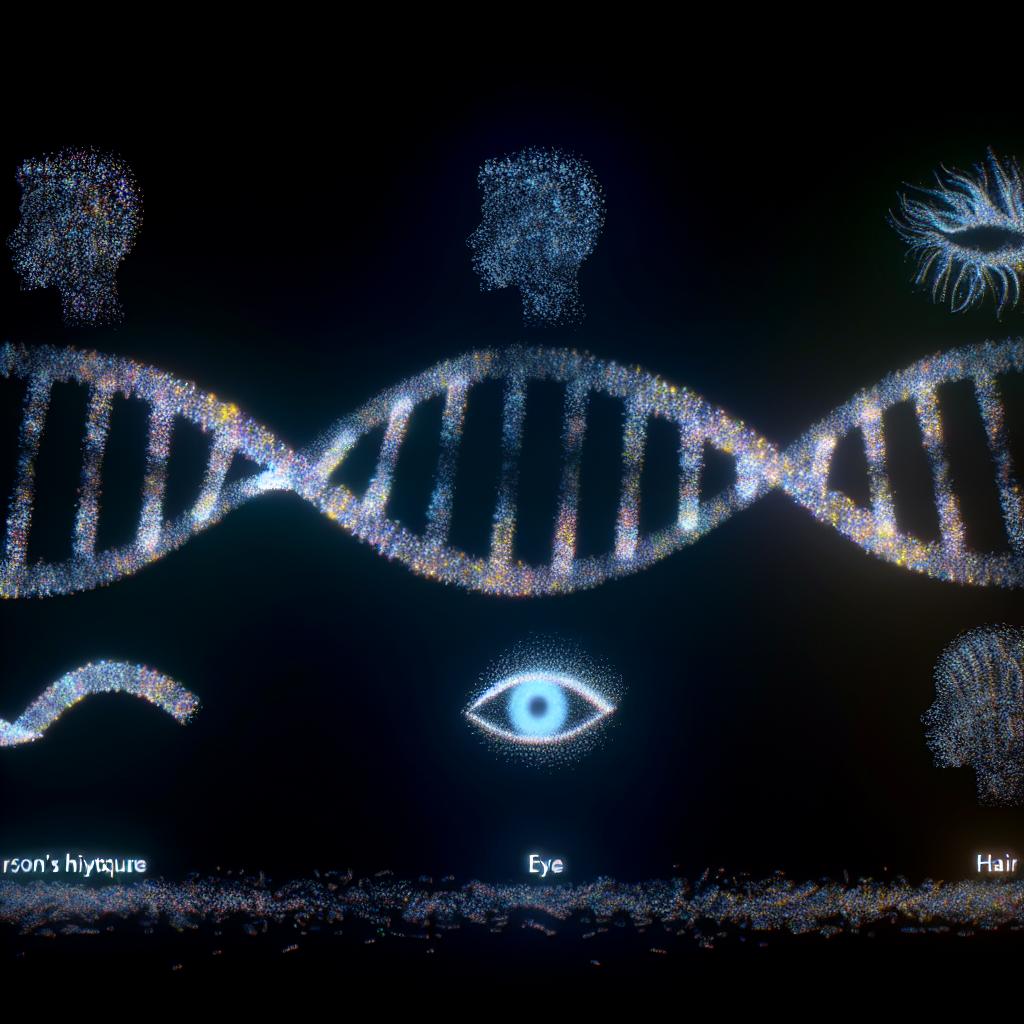Understanding DNA and Its Role in Physical Traits
DNA, or deoxyribonucleic acid, is the hereditary material found in almost all living organisms. Its primary function is to store genetic information that determines how organisms are built and function. This genetic blueprint is fundamental in shaping the physical traits, or phenotypes, of an individual.
What Is DNA?
Contained in the cell’s nucleus, DNA is a molecule composed of two strands forming a double helix. These strands consist of four nucleotide bases: adenine (A), thymine (T), cytosine (C), and guanine (G). These bases pair specifically (A with T and C with G) and the sequence of these bases encodes genetic information. This genetic code is responsible for the diversity of life and the myriad of physical characteristics we observe.
The Structure of DNA
The structure of DNA resembles a twisted ladder, where the sides are formed by sugar and phosphate molecules, and the rungs are made up of paired nucleotides. Each sequence of three nucleotides, known as a codon, corresponds to a specific amino acid, the building blocks of proteins. The order of these codons determines the sequence of amino acids in a protein, which in turn affects its function and role in the organism.
Genes and Their Role
Segments of DNA are organized into units called genes. Each gene contains instructions for making proteins, which are crucial molecules for both structure and function in living organisms. The variations in these genes are what lead to different traits, such as eye color, hair type, and even certain behaviors.
The Function of Proteins
Proteins synthesized using the information in genes are fundamental to many biological tasks. Structural proteins like collagen provide support, while enzymes accelerate chemical reactions necessary for life. Hormones, another class of proteins, act as messengers that coordinate various body functions. Each type of protein has a specific shape and function, which are determined by the sequence of amino acids encoded in the genes.
How Genetic Variation Influences Traits
Individuals possess two copies of each gene, one inherited from each parent. These copies can have slight variations called alleles. The combination of alleles you inherit from your parents contributes to your unique physical traits. Some traits are the result of a single gene, while others are influenced by multiple genes, a phenomenon known as polygenic inheritance.
For instance, height is a polygenic trait influenced by several genes, which means that it is not determined by just a single genetic factor but rather a combination of many genetic inputs. This results in the variation in height observed within a population.
Environmental Factors
While genetic predisposition plays a significant role, it’s essential to acknowledge the influence of environmental factors in shaping physical traits. Nutrition, climate, lifestyle, and exposure to toxins can all interact with genetic information to modify how certain traits develop.
Nutrition and Physical Development
The availability of essential nutrients such as proteins, vitamins, and minerals has a significant impact on growth and development. Genetic potential for height, for example, can be stunted by inadequate nutrition during critical growth periods. Conversely, balanced nutrition can help an individual reach their genetic height potential.
Epigenetics: Another Layer of Complexity
Epigenetics introduces an additional layer of complexity to the genetic influence on physical traits. It involves changes in gene expression that do not alter the DNA sequence itself. Factors such as stress, diet, and environmental influences can lead to epigenetic changes, which can subsequently affect how genes are expressed. Learn more about epigenetics and its impact on genetic expression.
The Impact of Epigenetic Changes
Epigenetic changes can activate or silence genes, thereby affecting the production and function of proteins in an organism. This modulation of gene activity can lead to variations in phenotype without altering the underlying genetic code, providing a mechanism for organisms to adapt to changing environments.
The Understanding of Genetic Disorders
In some cases, changes in the DNA sequence can lead to genetic disorders, which result in various physical and sometimes mental health challenges. These changes, often called mutations, can be inherited or occur spontaneously. Understanding DNA’s role in these disorders has opened avenues for genetic research, leading to potential therapies and interventions.
Types of Genetic Disorders
Genetic disorders can arise from different types of mutations, including substitution, deletion, and insertion of nucleotides. Some disorders are the result of inherited genetic mutations, while others may occur due to environmental factors or occur randomly. Examples include cystic fibrosis, caused by mutations in a single gene, and Down syndrome, resulting from an extra chromosome.
Research and Genetic Therapy
Advances in genetic research have paved the way for the development of genetic therapies. Techniques such as CRISPR-Cas9 allow scientists to edit genes with precision, offering potential cures for genetic disorders. Such tools hold promise for treating hereditary conditions and improving the understanding of genetic contributions to health and disease.
Concluding Thoughts
The influence of DNA on physical traits is a complex interaction between genetics and the environment. While our DNA sets the foundation for who we are, it is the interplay with external factors that ultimately shapes the full spectrum of our physical characteristics. Ongoing research continues to unravel these intricate patterns, enhancing our understanding of heritability and variation in living organisms.
Indeed, while we are born with certain genetic endowments, it is the dynamic interplay with our environment that allows for the ultimate expression of our potential. From genetics and epigenetics to environmental influences, each component plays a pivotal role in the ongoing story of who we are and who we can become.



